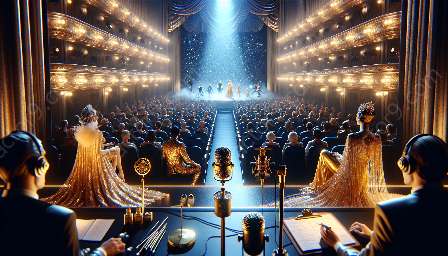Voice acting for puppetry requires careful consideration of how the voice aligns with the puppet character's movements and expressions. To bring the puppet to life, a voice actor must pay attention to the puppet's physicality, emotions, and story context. This topic cluster explores the key considerations and techniques for matching the voice to a puppet character.
Understanding the Puppet's Personality
Before a voice actor begins to match their voice to a puppet character's movements and expressions, it is essential to understand the personality of the puppet. Each puppet has its own unique traits, quirks, and mannerisms that should be reflected in the voice acting. Whether the puppet is playful, serious, shy, or boisterous, the voice actor must embody these traits through vocal performance.
Observing Movement and Expression
When matching the voice to a puppet character's movements and expressions, a voice actor should closely observe the puppet's physical movements and expressions. This includes its gestures, body language, facial expressions, and any props it may interact with. By understanding these visual cues, the voice actor can synchronize their vocal performance to complement the puppet's actions, creating a seamless and immersive experience for the audience.
Developing Vocal Characterization
A crucial aspect of matching voice to puppet character is vocal characterization. Voice actors must develop a distinct voice for each puppet to convey its personality effectively. This may involve altering pitch, tone, accent, pacing, and articulation to bring out the nuances of the character. By creating a unique and authentic voice for the puppet, the voice actor enhances the connection between the audience and the puppetry performance.
Emphasizing Emotional Resonance
Emotions play a significant role in puppetry, and voice actors need to infuse their vocal performance with the appropriate emotional resonance. Whether the puppet character is experiencing joy, sadness, anger, or fear, the voice actor's delivery should reflect these emotions in a genuine and compelling manner. Matching the voice to the puppet's emotional states enhances the audience's engagement and investment in the character's journey.
Adapting to Story Context
The story context and narrative of the puppetry performance heavily influence the matching of voice to puppet character. Voice actors must adapt their vocal delivery to suit the storyline, setting, and interactions with other puppets or characters. Understanding the context allows voice actors to make intuitive choices that enhance the overall cohesiveness of the performance.
Collaboration with Puppeteers
Effective communication and collaboration between voice actors and puppeteers are vital for harmonizing the voice with a puppet character's movements and expressions. By working closely with puppeteers, voice actors can synchronize their timing, cues, and reactions to ensure seamless coordination between the vocal performance and the puppet's physicality. This collaborative effort elevates the impact and authenticity of the puppetry experience.
Enhancing the Audience Experience
Ultimately, the key considerations for matching the voice to a puppet character's movements and expressions revolve around enhancing the overall audience experience. When the voice acting seamlessly aligns with the puppet's performance, it captivates and transports the audience into the puppetry world, fostering a deeper emotional connection and leaving a lasting impression.




























